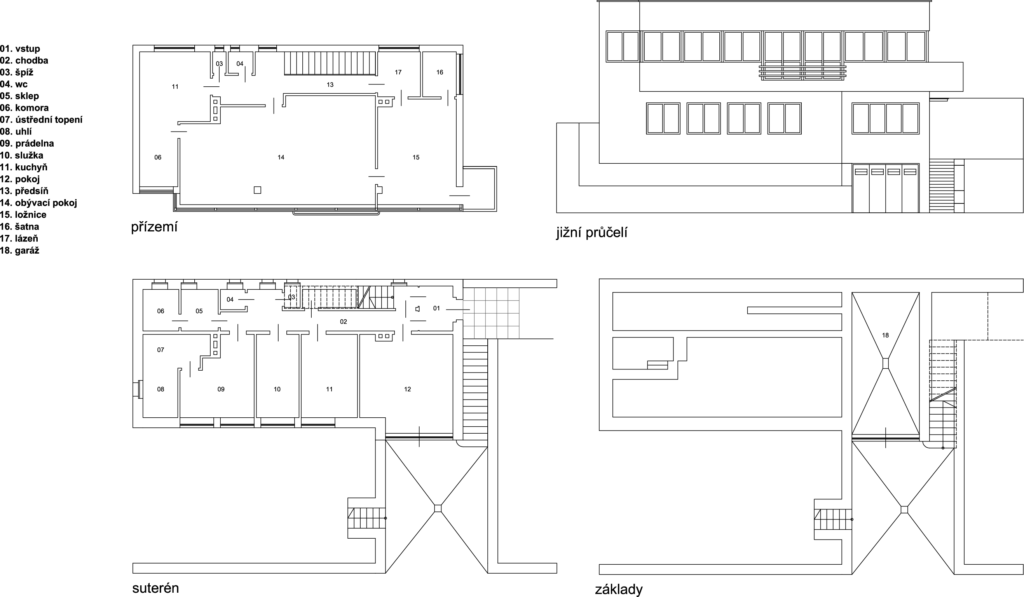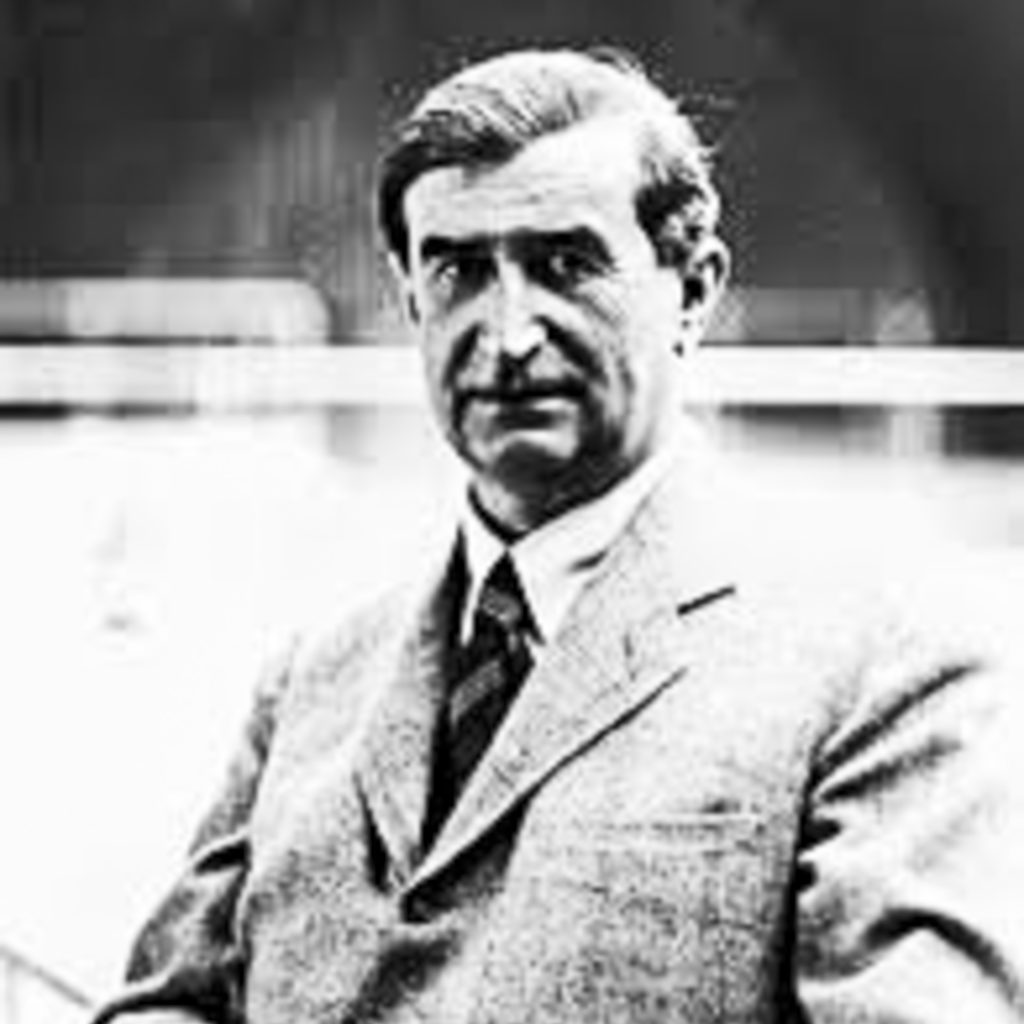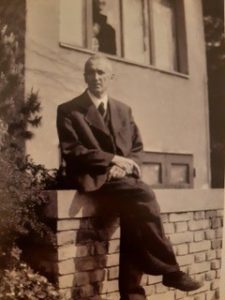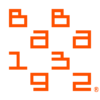
The House of PhDr. Václav and Jarmila Maule
Contrary to the customs of all the other model houses in Baba, Josef Gočár positioned the living space of the house for Václav Maule, the department head of the Ministry of Education and National Enlightenment, on a raised ground floor and there was a large living room and a bedroom upstairs. He thus offered the inhabitants of the villa a more stunning view of the Prague panorama from an elongated living space lined with a strip of windows. The house belongs among the four more comfortable villas in Baba and is characteristic of Gočár’s stylish elegance.

Architect
Josef Gočár
(*1880 Semtín +1945 Jičín)

An architect, professor, urban planner (Hradec Králové and Pardubice), and designer of furniture and articles for daily use. Josef Gočár was a generally respected figure of Czech architecture; he influenced many of his students and the following generations of architects. His works display the world’s rarity of Czech cubism in architecture (the iconic House at the Black Madonna) and rondocubism (the Legiobanka building, Na poříčí Street), the influence of constructivism or even designs in the national or Art Deco style. His professional life culminated with functionalism; the villas of the Baba estate (the Maule, Kytlice and Glücklich Houses) or the Church of St. Wenceslas in Vršovice. In 1925, he received the Grand Prix for his design of the Czechoslovak pavilion at the International Exhibition in Paris and, in 1926, he received the Order of the French Legion of Honour.
1902-1905
studied architecture with Professor Jan Kotěra at the Academy of Arts, Architecture, and Design in Prague
1905-1908
cooperated with the studio of Professor Jan Kotěra in Prague
1906
spent several months in London while supervising the Czech installation at the London Exhibition
1908-1945
independent architect in Prague
1908
member of the Mánes Union of Fine Arts
1911
co-founder of the Cubist Group of Fine Artists
1912
co-founder of the Prague Art Workshops (PUD)
1913-1914
member of the Association of Czech Works (SČD)
1916-1919
military service
1920-1924
President of the Czechoslovak Werkbund (SČSD)
1924
professor at the Academy of Fine Arts in Prague
1927
member of the Czech Academy of Sciences and Arts
1928-1931
Rector of the Academy of Fine Arts in Prague
1934
corresponding member of the Royal Institute of British Architects (RIBA)
Significant Works
1909
Wenke’s House, Jaroměř
1910
Jarušek’s House, Brno
1911-1913
The House at the Black Madonna, Prague-Staré Město
1912-13
Spa Pavilion, Bohdaneč
1920
Czechoslovak Pavilion for the trade fair in Lyon
1922-23
Legiobanka building, Prague-Nové Město
1922-24
Masaryk Square, Hradec Králové
1924-25
building plan of Hradec Králové
1924-1927
school building campus, Hradec Králové
1925
Czechoslovak Pavilion at the International Exhibition of Modern Decorative and Industrial Arts, Paris
House of Agricultural Enlightenment, Prague-Vinohrady
1928-1930
Church of St. Wenceslas, Prague-Vršovice
1932
Directorate of the Czechoslovak State Railways, Hradec Králové
1932
house of Václav and Jarmila Maule, Baba, Prague-Dejvice
1933-1936
houses of Karel Kytice, Marie and Stanislav Mojžíš-Lom, and Julius Glücklich, Baba, Prague-Dejvice
1934
Tax and District Office, Hradec Králové
Otakar Med’s villa, Humpolec
Owner
PhDr. Václav Stanislav Maule

PhDr. Václav Stanislav Maule (1884-1945) was the head of the department of universities from 1937; he translated Brehm’s Life of Animals and Frank Hurley’s Pearls and Savages and he also contributed to the bulletin of the Royal Czech Society of Sciences. He was a member of the Czechoslovak Werkbund and participated actively in the preparation of the Baba estate exhibition. In 1944, he was taken to the Terezín concentration camp. He returned to his wife Jarmila and to Baba in May 1945 and died of typhus soon afterwards.

